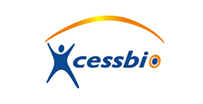
| Storage: | 4oC for 3 month. -20oC for 6 month. |
| Purity: | ≥98% for each compound |
| Cocktail Formulation: | LSB: 0.1 mM LDN-193189 and 10 mM SB431542 in DMSO solution 3i: 3 mM CHIR99021, 10 mM SU5402 and 10 mM DAPT in DMSO solution |
Recently published in Nature Biotechnology (1) by Chambers et al, LSB3i is a combination of five small-molecule pathway inhibitors that significantly improves the conventionally slow and inefficient neuronal differentiation of human ESCs or iPSCs. Under the LSB3i treatment, human ESCs or iPSCs very rapidly differentiate into functional neurons with over 75% efficiency within 10 day of differentiation. The resulting neurons exhibit typical markers and functional properties of human nociceptors, including tetrodotoxin (TTX)-resistant, SCN10A-dependent sodium currents and response to nociceptive stimuli, such as ATP and capsaicin. This convenient, robust, and scalable generation of functional human nociceptors from human ESCs/iPSCs using LSB3i provides a platform for basic research, disease modeling, and drug discovery related to pain studies.
XcessBio’s Neuronal-LSB3i contains two combinations/components: LSB (combination of LDN193189/BMP inhibitor and SB431542/TGFβ inhibitor) and 3i (combination of CHIR99021/GSK3 inhibitor, SU5402/FGF-VEGF-PDGF inhibitor, DAPT/Notch inhibitor).
How to Use:
- In vitro: Simply add/dilute the received LSB3i stock solutions from each vial at 1:1000 into your hESC/iPSC differentiation basal media to make the LSB and 3i induction media. LSB is the first 2-small-molecules combination used on day 0-5; and 3i is the second 3-small-molecules combination used on day 2-10.
Reference:
- Chambers SM, et al. Combined small-molecule inhibition accelerates developmental timing and converts human pluripotent stem cells into nociceptors. (2012) Nature Biotechnology 30, 715-720.
- Sun, L. et al. Design, synthesis, and evaluations of substituted 3-[(3- or 4-carboxyethylpyrrol-2-yl)methylidenyl]indolin-2-ones as inhibitors of VEGF, FGF, and PDGF receptor tyrosine kinases.(1999) J. Med. Chem. 42, 5120–5130.
- Bennett, C.N. et al. Regulation of Wnt signaling during adipogenesis. (2002) J. Biol. Chem. 277, 30998–31004.
- Dovey, H.F. et al. Functional gamma-secretase inhibitors reduce beta-amyloid peptide levels in brain. (2001) J. Neurochem. 76, 173–181.
- Product Specification:
 Kit-Neuronal-LSB3i_spec.pdf
Kit-Neuronal-LSB3i_spec.pdf- Product MSDS:
 Kit-neuronal-LSB3i_MSDS.pdf
Kit-neuronal-LSB3i_MSDS.pdf
Products are for research use only. Not for human use.
ebiomall.com






>
>
>
>
>
>
>
>
>
>
>
>
问题:
1,既然外国公司的原材料这么贵,我就想购买国内厂家的,请各位大侠帮忙提供一下国内哪些厂家的玻璃胚针物廉价美?
2,国内的哪些大学的测试中心,能够提供拉针仪的有偿使用服务的?
具体操作是:局麻下将3~4根电极导管经股静脉、锁骨下静脉送入冠状静脉窦、高位右心房及希氏束、右心室等部位,刺激心房和心室诱发与临床一致的心动过速,定位心动过速起源点,然后将消融用的电极导管送达已定位的起源点并与体外的射频发生器相连。放电后重复电生理检查,若不能诱发心动过速且临床随访无发作,则说明消融成功。
此方法治疗的疾病有:预激综合征和房室结双经路引起的阵发性室上性心动过速、房扑和房颤、室性心动过速及房性心动过速。
脑电波:
脑电波(Electroencephalogram,EEG)是大脑在活动时,大量神经元同步发生的突触后电位经总和后形成的。它记录大脑活动时的电波变化,是脑神经细胞的电生理活动在大脑皮层或头皮表面的总体反映。
脑电波来源于锥体细胞顶端树突的突触后电位。脑电波同步节律的形成还与皮层丘脑非特异性投射系统的活动有关。
脑电波是脑科学的基础理论研究,脑电波监测广泛运用于其临床实践应用中。
电子波
电子波是指电子产品等所发出的电子辐
电子波的害处
电脑及大多数家用电器设备等都是可以产生各种形式不同频率、不同强度的电磁辐射源。
电磁辐射--对人体机理的危害
电场辐射危害人体的机理主要是热效应、非热效应和累积效应等。
热效应:人体70%以上是水,水分子受到电子波辐射后相互摩擦,引起机体升温,从而影响到体内器官的正常工作。
非热效应:人体的器官和组织都存在微弱的电磁场,它们是稳定和有序的,一旦受到外界电场的干扰,处于平衡状态的微弱电场即将遭到破坏,人体也会遭受损伤。
累积效应:热效应和非热效应作用于人体后,对人体的伤害尚未来得及自我修复之前(通常所说的人体承受力---内抗力),再次受到电子波辐射的话,其伤害程度就会发生累积,久之会成为永久性病态,危及生命。对于长期接触电子波辐射的群体,即使功率很小,频率很低,也能诱发体内想不到的病变,应引起警惕。
谢谢啦~
1.在没有开始记录(空跑的状态下)和开始记录时的波形的基线都不在0点而是处于负值,是因为仪器设备设置的问题还是仪器本身有损坏?
2.记录ACC场电的通道50Hz干扰特别大,接地线排干扰后仍然存在,可能是什么问题呢?
3.Brownlee440的Amplifier上有Gain,lowpassfilter,Highpassfilter的设置,这个设置对ACC场电的记录有影响吗?如果记录ACC的场电,一般常用的参数是多少啊?
4.有没有用过这个仪器记录过肌电的前辈,我用A-B模式可以记录到类似Chart5软件记录的肌电波形。可是用clampfit10.2的Analyze--statistics--Measurement--Area分析,分析出来的数值太小,与波形不符。从波形看,明显有强的肌肉收缩,但是数值却没有明显差异。有前辈分析过肌电吗?是否我的分析方法不对?或者是应为问题1中提到的基线不在0点所引起的曲线下面积分析的误差?
感谢!









